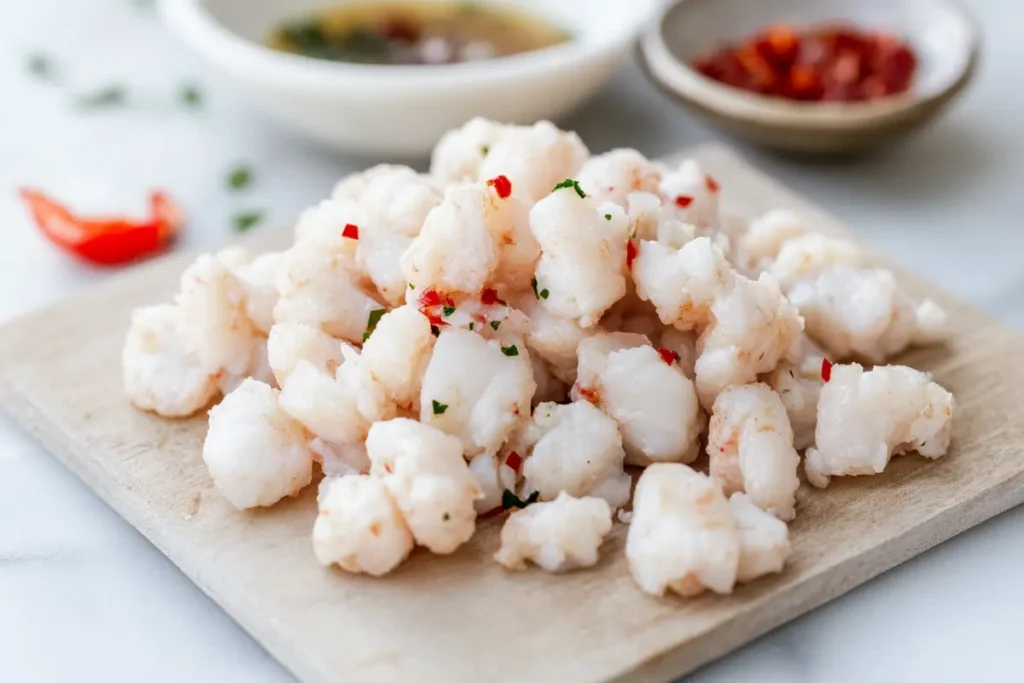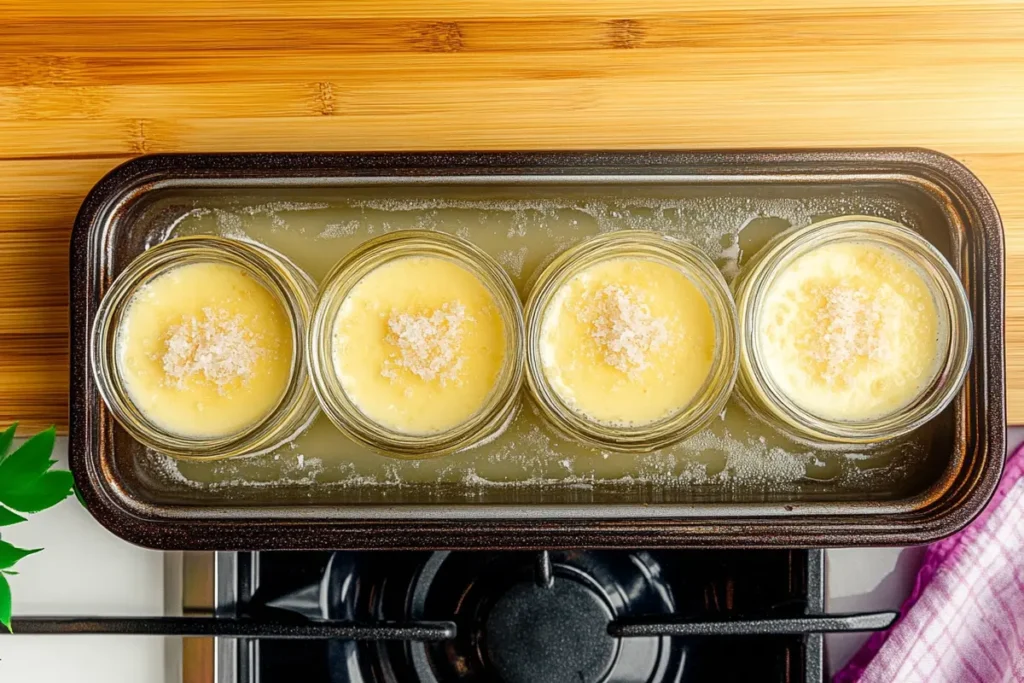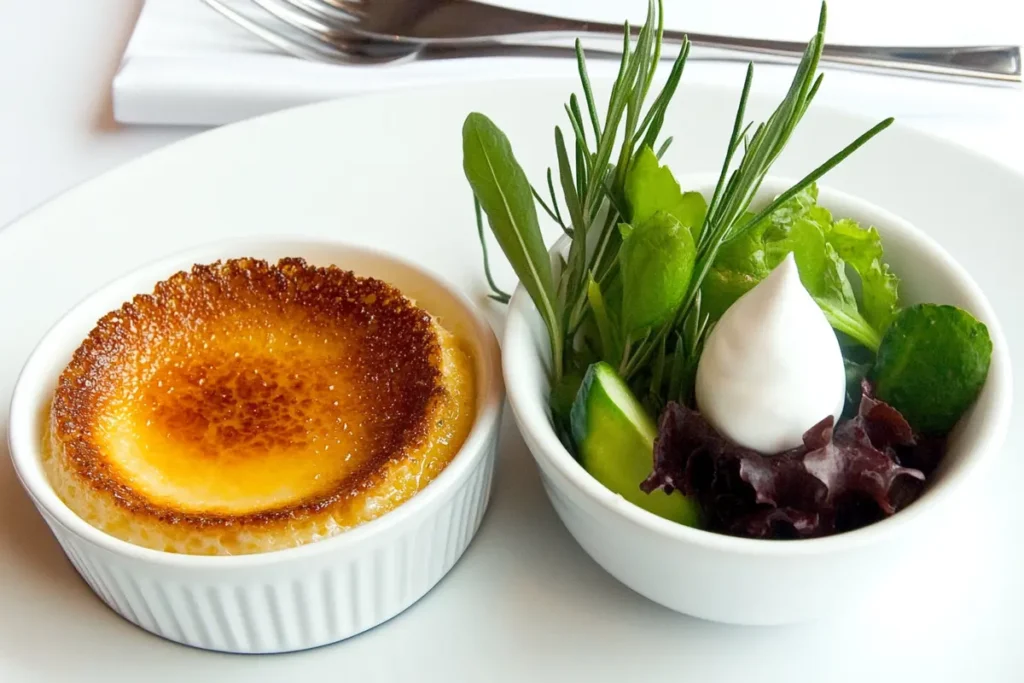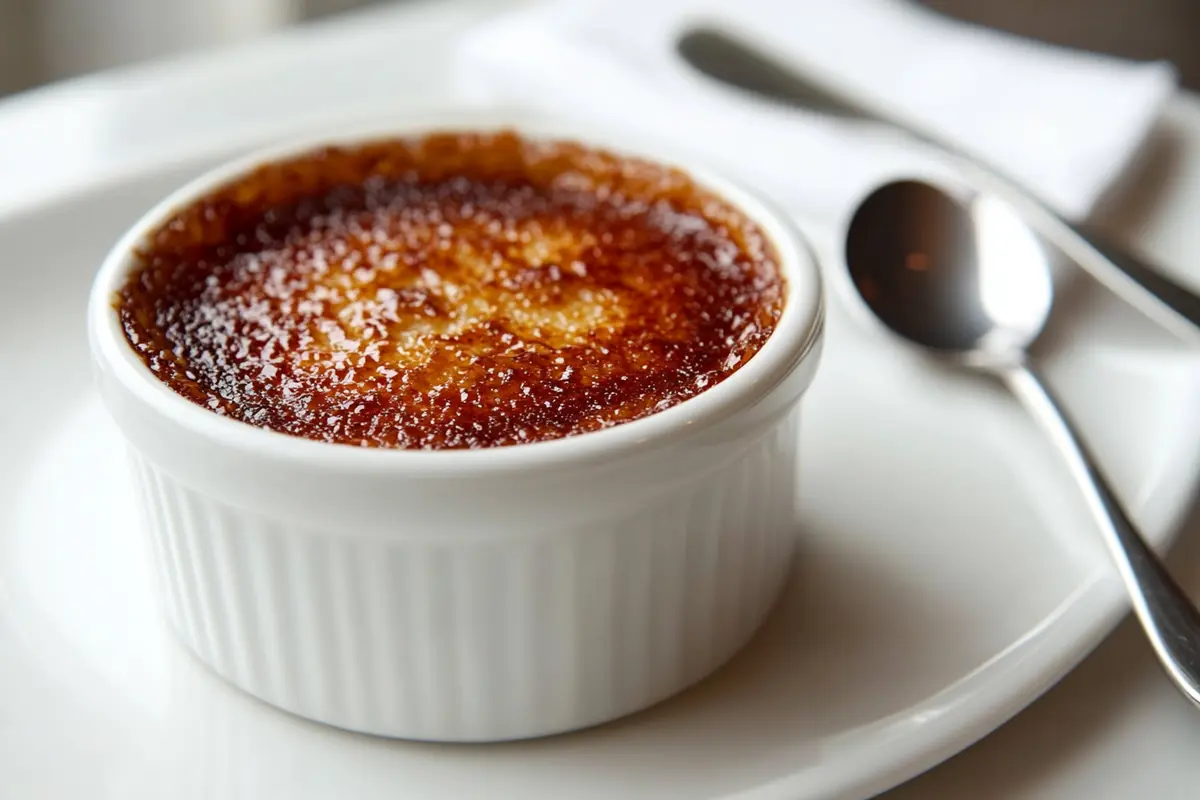Discovering the Exquisite Crab Brulee Recipe
Discovering the Exquisite Crab Brulee Recipe
The crab brulee recipe is a perfect marriage of delicate seafood flavors and French-inspired culinary techniques. Known for its velvety custard base and crisp caramelized topping, this dish is a savory twist on the classic crème brûlée. But what sets it apart? The luscious crab meat, which infuses the custard with a burst of oceanic sweetness.
The Origins of Crab Brulee
Crab Brulee traces its roots to the innovative minds of chefs who sought to bring a seafood spin to traditional dessert fare. Inspired by the techniques used in creating crème brûlée, this dish evolved into a savory masterpiece, often featured in fine dining restaurants. Its popularity continues to grow as food enthusiasts experiment with regional twists, such as incorporating locally sourced crab meat or unique spice blends.
The brilliance of this dish lies in its ability to combine luxurious textures with the subtle flavors of the sea, making it a must-try for anyone who loves gourmet seafood.
Why Crab Brulee is a Culinary Delight
Imagine taking a bite of silky custard laced with the delicate flavor of fresh crab, only to be met with the satisfying crunch of caramelized sugar. That contrast of textures and flavors is precisely why crab brulee is adored by food lovers around the globe.
Moreover, this recipe offers plenty of room for creativity. Whether you’re hosting a formal dinner or simply indulging in a weekend cooking experiment, crab brulee elevates any meal with its elegant presentation and mouthwatering taste. Plus, it’s surprisingly straightforward to prepare, even for beginners!
Ingredients and Equipment Of Crab Brulee
Essential Ingredients for Crab Brulee
Creating the perfect crab brulee recipe begins with sourcing the finest ingredients. Since this dish relies on a harmonious blend of flavors, choosing high-quality components is key. Let’s take a closer look at what you’ll need.
Selecting the Finest Crab Meat

Fresh lump crab meat is the star of this recipe, and its quality can make or break the dish. Opt for fresh or pasteurized crab meat from a trusted source. If you’re near the coast, local seafood markets often offer the freshest options. For a slightly sweeter profile, blue crab or Dungeness crab meat works wonderfully. Avoid canned or imitation crab, as these can compromise the texture and flavor.
Cream and Dairy Components
Richness is central to the custard, so full-fat ingredients are a must. Heavy cream, paired with a hint of whole milk, provides the ideal creamy consistency. These components work in tandem to create the signature velvety texture that distinguishes savory crème brûlée.
Seasonings and Flavor Enhancers
To bring out the best in the crab, use a blend of salt, freshly cracked black pepper, and a touch of cayenne for subtle heat. Adding a splash of lemon juice brightens on crab brulee, while a dash of Old Bay seasoning enhances the seafood’s natural flavor. Herbs like chives or parsley can also be incorporated for added freshness.
Necessary Kitchen Equipment
The right tools can streamline the process and ensure professional results. Here’s what you’ll need:
Ramekins and Baking Dishes
Ramekins are essential for a creamy custard recipe. These small, heat-resistant dishes allow for individual servings and ensure even cooking of the custard. Place the ramekins in a deep baking dish when preparing the water bath, as this method helps the custard base cook gently and evenly, resulting in the perfect creamy texture.
Kitchen Torch Usage
A kitchen torch is essential for achieving that signature caramelized crust. If you don’t have one, don’t fret! You can use your oven’s broiler as an alternative, though a torch offers more control and precision.
| Nutrient | Amount |
|---|---|
| Calories | 220 kcal |
| Protein | 12 g |
| Fat | 18 g |
| Saturated Fat | 10 g |
| Cholesterol | 140 mg |
| Carbohydrates | 4 g |
| Sugars | 2 g |
| Sodium | 360 mg |
| Fiber | 0 g |
Step-by-Step Preparation
Preparing the Custard Base
The custard base is the heart of any crab brulee recipe, combining richness with a hint of seafood sweetness. Getting it right is essential to the dish’s success. Here’s how to prepare it like a pro:
Whisking Egg Yolks and Cream
Begin by separating the egg yolks from the whites; you’ll need about four to six yolks for this recipe. In a mixing bowl, whisk the yolks until they’re slightly thickened and pale yellow. Gradually incorporate the heavy cream, whisking constantly to create a smooth, cohesive mixture. This step ensures that the custard will be rich and velvety without any lumps.
Incorporating Seasonings
Once the base is ready, it’s time to flavor it. Stir in a pinch of salt, freshly cracked black pepper, and a dash of cayenne on crab brulee. For a subtle citrusy note, add a splash of fresh lemon juice. Finally, whisk in Old Bay seasoning to give the custard a depth of flavor that perfectly complements the crab. Be sure to taste and adjust the seasoning before proceeding.
Assembling the Crab Brulee
With the custard base prepared, the next step is to bring all the elements together.
Layering Crab Meat and Custard
Divide the fresh lump crab meat evenly among the ramekins, ensuring each serving has a generous layer of seafood at the bottom. Carefully pour the custard mixture over the crab, leaving a little space at the top of each ramekin. This method ensures the crab is infused with the custard’s rich flavors during baking.
Setting Up the Water Bath

Place the filled ramekins in a deep baking dish. Carefully pour hot water into the baking dish, ensuring it reaches halfway up the sides of the ramekins. This water bath, or bain-marie, helps the custard cook gently and evenly, preventing curdling or overcooking.
Cooking Techniques to Crab Brulee
Baking to Perfection
The baking process is crucial for ensuring the custard sets properly without overcooking. A well-baked crab brulee should have a creamy texture and a slightly jiggly center when done.
Optimal Oven Temperatures
Preheat your oven to 325°F (165°C). This moderate temperature ensures the custard cooks slowly and evenly. Place the baking dish containing the water bath and ramekins on the center rack of the oven.
Bake the custards for 30 to 40 minutes, checking frequently toward the end of the cooking time. To test for doneness, gently shake one of the ramekins. The custard should have a slight jiggle in the center but be firm around the edges.
Ensuring Even Cooking
To prevent overbaking the creamy custard, remove the ramekins from the oven as soon as the desired consistency is achieved. The residual heat will gently continue to cook the custard base after it’s removed from the oven. Carefully lift the ramekins from the water bath using tongs or a kitchen towel, and set them aside to cool for the perfect custard texture.
Caramelizing the Sugar Topping
Now comes the fun part—creating the signature caramelized sugar crust that gives crab brulee its delightful crunch.
Techniques for a Crisp Crust
Once the custards are completely cooled, sprinkle a thin, even layer of granulated sugar over the top of each one. Using a kitchen torch, move the flame in a circular motion to melt the sugar evenly. As it heats, the sugar will bubble and turn a golden-brown color, forming a glossy crust. Allow the crust to cool for a minute before serving.
Alternative Methods Without a Torch
Don’t have a kitchen torch? No problem! Place the ramekins under your oven’s broiler for 1 to 2 minutes. Be sure to keep a close eye on them to prevent the sugar from burning. Rotate the ramekins as needed to achieve an even caramelization.
Serving Suggestions and Variations for crab brulee

Ideal Accompax niments for Crab Brulee
Serving crab brulee is an opportunity to elevate its presentation and complement its flavors. Pairing it with the right accompaniments transforms it into an unforgettable dish.
Pairing with Fresh Salads
A crisp green salad with a light vinaigrette makes a fantastic accompaniment. The tangy dressing balances the richness of the custard, creating a refreshing contrast. Consider adding elements like arugula, cherry tomatoes, or a sprinkle of citrus zest for added vibrancy on crab brulee.
Side Dishes to Complement the Flavor
For a heartier meal, serve the crab brulee alongside roasted vegetables or a warm baguette. These sides provide texture and soak up the creamy custard for a satisfying bite. Steamed asparagus or buttery mashed potatoes are also great options to round out the dish.
Creative Variations of the Classic Recipe
While the traditional crab brulee recipe is a showstopper, experimenting with variations can add a unique twist to your culinary repertoire.
Incorporating Different Seafood
Love seafood? Try substituting part of the crab meat with shrimp, lobster, or scallops. These alternatives bring their own flavors to the dish while maintaining the creamy custard’s luxurious texture.
Adjusting Seasonings for Unique Tastes
For an extra kick, incorporate spices like smoked paprika or curry powder into the creamy custard base. Adding finely chopped fresh herbs such as dill, basil, or tarragon can also enhance the custard’s flavor profile, creating a unique and delicious twist to this classic recipe.
Making it Dairy-Free
If you’re catering to dietary restrictions, swap the heavy cream for coconut cream or a non-dairy alternative. The result is still creamy and satisfying, with a hint of natural sweetness from the coconut.
Expert Tips and Common Mistakes
Pro Tips for a Perfect Crab Brulee
Achieving flawless results with a crab brulee recipe requires attention to detail and a few insider tricks. Here’s how to elevate your dish to professional standards:
Achieving the Ideal Custard Consistency
- Strain the custard base: Before pouring it over the crab, pass the custard mixture through a fine-mesh sieve. This removes any lumps or bits of egg, ensuring a silky texture.
- Don’t rush the cooking process: Low and slow is the mantra here. Cooking the custard at a moderate temperature prevents it from curdling or cracking.
- Check for doneness carefully: A gentle jiggle test will tell you when it’s ready. Overcooking can result in a rubbery texture that detracts from the dish’s elegance.
Enhancing Flavor Profiles
- Use fresh lemon juice and zest to add brightness. The subtle citrus notes enhance the sweetness of the crab without overpowering it.
- Experiment with different types of crab meat for varied flavor profiles. For example, Dungeness crab offers a slightly sweeter taste compared to other varieties.
- Toast spices like paprika or cayenne briefly before adding them to the mixture to amplify their aroma.
Avoiding Common Pitfalls
Even seasoned cooks can stumble when tackling savory crème brûlée. Here’s how to sidestep the most frequent missteps:
Preventing Overcooking
The custard can quickly turn grainy if it’s baked too long or at too high a temperature. Use a thermometer to ensure the water bath stays between 150°F and 160°F (65°C to 70°C), creating the perfect cooking environment.
Ensuring a Smooth Custard Texture
- If the custard mixture curdles, it’s likely due to overheating. Use tempered eggs by gradually whisking the hot cream into the yolks to avoid this issue.
- Avoid overmixing the custard, which can introduce air bubbles that ruin its smoothness. Instead, stir gently until just combined.
Avoiding a Burnt Sugar Crust
When caramelizing the sugar, it’s tempting to apply too much heat all at once. This can result in an uneven or bitter-tasting crust. Hold the torch at a consistent distance, and move it in a steady circular motion for even browning.
Frequently Asked Questions about crab brulee
Addressing common questions about the crab brulee recipe can help beginners and seasoned cooks alike perfect this unique dish.
Crab brulee is a modern twist on the traditional French dessert, crème brûlée. While the original dish is sweet, chefs innovated by incorporating savory ingredients like crab to create a unique appetizer. This fusion of French techniques with seafood ingredients has grown in popularity, particularly in fine dining.
While fresh crab meat is ideal for the best flavor and texture, canned crab meat can be used in a pinch. If opting for canned crab, drain it thoroughly and check for any shells. Keep in mind that the flavor may not be as robust as when using fresh or pasteurized crab meat.
To store leftovers, cover the ramekins with plastic wrap or a tight lid and refrigerate them for up to 2 days. Avoid caramelizing the sugar crust until just before serving, as the topping may lose its crunch when refrigerated.
For a lighter version or dietary restrictions, you can replace heavy cream with half-and-half or coconut cream. Non-dairy options, such as almond or cashew cream, also work well and add a slight nuttiness to the dish.
Conclusion Of Crab Brulee Recipe
The crab brulee recipe is a testament to the beauty of combining sophisticated techniques with fresh, high-quality ingredients. This savory twist on a classic dessert not only highlights the delicate flavors of crab but also showcases the rich, creamy textures of a perfectly executed custard. From selecting the finest crab meat to achieving the ideal caramelized crust, each step contributes to a dish that is as elegant as it is indulgent.
Whether you’re preparing it for a special occasion or as a standout appetizer, crab brulee offers a unique opportunity to impress with both flavor and presentation.
By following the tips, techniques, and creative variations outlined in this guide, you can confidently create a delicious culinary masterpiece that leaves a lasting impression on your guests. So, gather your fresh ingredients, ignite that kitchen torch for caramelizing, and embark on a flavorful journey with this incredible creme brulee recipe.
Enjoy every bite of this luxurious dish, and happy cooking!

